|
|
|
 |
| |
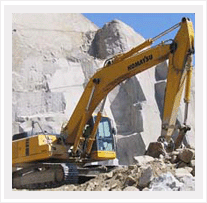 Natural Stones are quarried out of mountains or underground from all over the world and then cut into blocks.The various sized stone blocks are then transported to the cutting and finishing plants where the stones are cut into various sizes and shapes and then the face is finished into a polished, honed, flamed, brushed, hammered, etc. based on the customer’s specifications. Natural Stones are quarried out of mountains or underground from all over the world and then cut into blocks.The various sized stone blocks are then transported to the cutting and finishing plants where the stones are cut into various sizes and shapes and then the face is finished into a polished, honed, flamed, brushed, hammered, etc. based on the customer’s specifications.
One beautiful characteristic of natural stone is that there are no two pieces of natural stone alike. Some stones may have extreme variation in color and veining from tile to tile or slab to slab.
This characteristic is common in many types of stone, and is part of the inherent beauty of using a natural product in your home or project.
|
| |
| |
| --------------------------------------------------------------------------------------------------------------------------------------------------- |
|
|
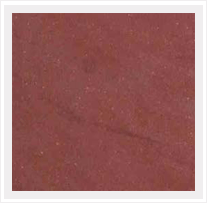 Quartzite, common and widely distributed rock composed mainly or entirely of quartz. The compact, granular rock is a form of metamorphosed sandstone in which silica, or quartz, has been deposited between the grains of quartz of which the sandstone is essentially composed. Other minerals that may be present in small amounts in quartzite include feldspar, mica, rutile, tourmaline, and zircon. Quartzite has a smooth fracture and is found primarily among ancient rocks, such as those of the Cambrian or Precambrian system Quartzite, common and widely distributed rock composed mainly or entirely of quartz. The compact, granular rock is a form of metamorphosed sandstone in which silica, or quartz, has been deposited between the grains of quartz of which the sandstone is essentially composed. Other minerals that may be present in small amounts in quartzite include feldspar, mica, rutile, tourmaline, and zircon. Quartzite has a smooth fracture and is found primarily among ancient rocks, such as those of the Cambrian or Precambrian system |
| |
 |
| |
| --------------------------------------------------------------------------------------------------------------------------------------------------- |
| |
|
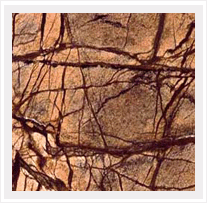 Marble is a metamorphic rock resulting from the recrystallization of limestone. Commercially, however, all calcareous rocks produced by nature and capable of taking a polish are called marbles, as are some dolomite and serpentine rocks. (See "Glossary" for clarification.) The groupings – A, B, C, and D – should be taken into account when specifying marble, for all marbles are not suitable for all building applications. This is particularly true of the comparatively fragile marbles classified under Groups C and D, which may require additional fabrication before or during installation. These four groups are: Marble is a metamorphic rock resulting from the recrystallization of limestone. Commercially, however, all calcareous rocks produced by nature and capable of taking a polish are called marbles, as are some dolomite and serpentine rocks. (See "Glossary" for clarification.) The groupings – A, B, C, and D – should be taken into account when specifying marble, for all marbles are not suitable for all building applications. This is particularly true of the comparatively fragile marbles classified under Groups C and D, which may require additional fabrication before or during installation. These four groups are:
-
GROUP A: Sound marbles with uniform and favorable working qualities; containing no geological flaws or voids.
-
GROUP B: Marbles are similar in character to the proceeding group, but with less favorable working qualities; may have natural faults; a limited amount of whizzing, sticking and filling may be required.
-
GROUP C: Marbles with some variations in working qualities: geological flaws, voids, veins and lines of separation are common. It is standard to repair these variations by one or more of several methods–whizzing, sticking, filling or cementing. Liners and other forms of reinforcement are used when necessary.
-
GROUP D: Marbles similar to the preceding group, but containing a larger proportion of natural faults, maximum variations in working qualities, and requiring more of the same methods of finishing. This group compromises many of the highly colored marbles prized for their decorative values.
The Soundness Classifications merely indicate what method and amount of repair and fabrication is necessary prior or during installation, as based on standard trade practices. |
| |
 |
| |
|
--------------------------------------------------------------------------------------------------------------------------------------------------- |
| |
|
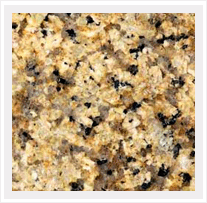 Granite, igneous rock of visible crystalline formation and texture. It is composed of feldspar (usually potash feldspar and oligoclase) and quartz, with a small amount of mica (biotite or muscovite) and minor accessory minerals, such as zircon, apatite, magnetite, ilmenite, and sphene. Granite is usually whitish or gray with a speckled appearance caused by the darker crystals. Potash feldspar imparts a red or flesh color to the rock. Granite crystallizes from magma that cools slowly, deep below the earth's surface. Exceptionally slow rates of cooling give rise to a very coarse-grained variety called pegmatite. Granite, along with other crystalline rocks, constitutes the foundation of the continental masses, and it is the most common intrusive rock exposed at the earth's surface. Granite, igneous rock of visible crystalline formation and texture. It is composed of feldspar (usually potash feldspar and oligoclase) and quartz, with a small amount of mica (biotite or muscovite) and minor accessory minerals, such as zircon, apatite, magnetite, ilmenite, and sphene. Granite is usually whitish or gray with a speckled appearance caused by the darker crystals. Potash feldspar imparts a red or flesh color to the rock. Granite crystallizes from magma that cools slowly, deep below the earth's surface. Exceptionally slow rates of cooling give rise to a very coarse-grained variety called pegmatite. Granite, along with other crystalline rocks, constitutes the foundation of the continental masses, and it is the most common intrusive rock exposed at the earth's surface.
Although granite has been known as igneous rocks derived from, molten masses or magmas, but there is wide evidence that the origin of some granite may be attributed to regional metamorphism or preexisting rocks, rearrangement and recrystallization taking place without a liquid or molten stage.
The specific gravity of granite ranges from 2.63 to 2.75. Its crushing strength is from 1050 to 14,000 kg per sq cm (15,000 to 20,000 lb per sq in). Granite has greater strength than sandstone, limestone, and marble and is correspondingly more difficult to quarry. It is an important building stone, the best grades being extremely resistant to weathering.
Normally granite is classified in three different groups:
-
FINE GRAIN: Fine grain granites are those which the feldspar crystals average about 1/16 - 1/8" in diameter.
-
MEDIUM GRAIN: Medium grain granites are those in which the feldspar crystals average about 1/4" in diameter.
-
COARSE GRAIN: Coarse grain granites are those in which feldspar crystals average 1/2" , and greater diameter or several centimeters in maximum dimension. Coarse grain granites may have a lower density.
In recent years about 83 percent of the stone used for monuments has been granite, about 17 percent, marble. |
| |
 |
| |
| --------------------------------------------------------------------------------------------------------------------------------------------------- |
| |
|
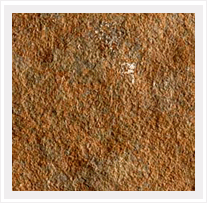 Limestone is defined as a rock of sedimentary origin composed principally of calcium carbonate or the double carbonate of calcium and magnesium, or a combination of these two minerals. Recrystallized limestone, compact microcrystalline limestone, and travertine that are capable of taking a polish are promoted, marketed and sold as either limestone or marble, particularly in the United States. Dimension limestone is divided into three sub-classifications that describe their densities in approximate ranges, as follows:
LOW DENSITY - Limestone having a density ranging from 110 through 135/lb/ft3 (1760 through 2160 kg/m3)..
MEDIUM DENSITY - Limestone having a density greater that 135 and not greater than 160 lb/ft3 (2160 through 2560 kg/m3).
HIGH DENSITY - Limestone having a density greater than 160 lb/ft3 (2560 kg/m3).
Limestone contains a number of distinguishable natural characteristics, including calcite streaks or spots, fossils or shell formations, pit holes, reedy formations, open texture streaks, honeycomb formations, iron spots , travertine-like formations and grain formation changes. One or a combination of these characteristics will affect the texture. Limestone is defined as a rock of sedimentary origin composed principally of calcium carbonate or the double carbonate of calcium and magnesium, or a combination of these two minerals. Recrystallized limestone, compact microcrystalline limestone, and travertine that are capable of taking a polish are promoted, marketed and sold as either limestone or marble, particularly in the United States. Dimension limestone is divided into three sub-classifications that describe their densities in approximate ranges, as follows:
LOW DENSITY - Limestone having a density ranging from 110 through 135/lb/ft3 (1760 through 2160 kg/m3)..
MEDIUM DENSITY - Limestone having a density greater that 135 and not greater than 160 lb/ft3 (2160 through 2560 kg/m3).
HIGH DENSITY - Limestone having a density greater than 160 lb/ft3 (2560 kg/m3).
Limestone contains a number of distinguishable natural characteristics, including calcite streaks or spots, fossils or shell formations, pit holes, reedy formations, open texture streaks, honeycomb formations, iron spots , travertine-like formations and grain formation changes. One or a combination of these characteristics will affect the texture. |
| |
 |
| |
| --------------------------------------------------------------------------------------------------------------------------------------------------- |
| |
|
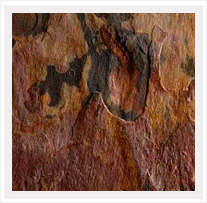 The shale from which slate originate were deposited previously on clay beds. Subsequent earth movements tilted these beds of shale, at first horizontal, and the intense metamorphism that converted these into slates folded and contracted them. Slate, then , belongs to the metamorphic group of rocks and can be defined as a fine grain rock derived from clays and shale and possessing a cleavage that permits it to be split into thin sheets. INTERIOR use only slates are designates with an "I" or "interior" on specification sheets. EXTERIOR use is labels as either "E" or "exterior" on specification sheets. The shale from which slate originate were deposited previously on clay beds. Subsequent earth movements tilted these beds of shale, at first horizontal, and the intense metamorphism that converted these into slates folded and contracted them. Slate, then , belongs to the metamorphic group of rocks and can be defined as a fine grain rock derived from clays and shale and possessing a cleavage that permits it to be split into thin sheets. INTERIOR use only slates are designates with an "I" or "interior" on specification sheets. EXTERIOR use is labels as either "E" or "exterior" on specification sheets. |
| |
 |
| |
|
|
| |
| |
| |
|
|
|
|